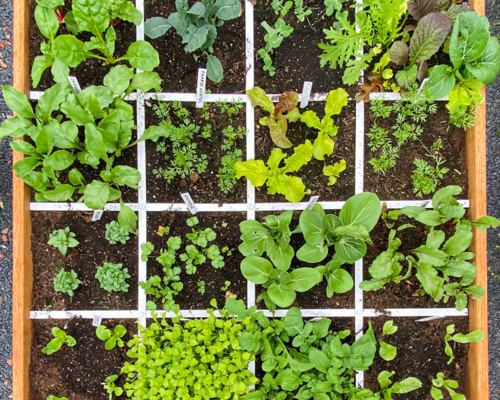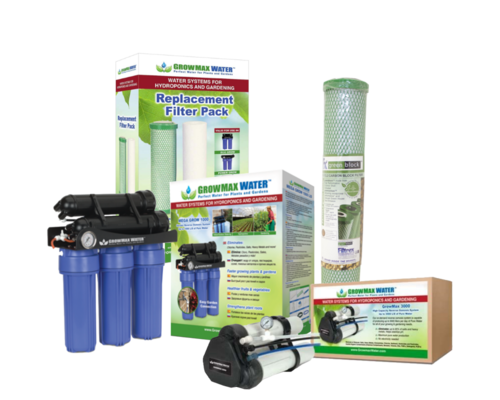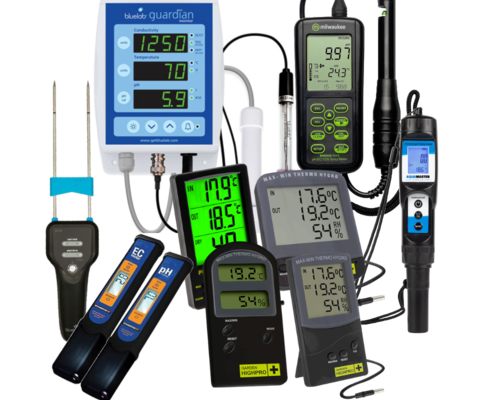Growing your own vegetables or herbs in a vegetable garden
A vegetable garden can not only provide delicious fresh food, but it can also be a fun and relaxing hobby. Creating a vegetable garden is not as difficult as you may think, and it can even be done on a small plot of land or in pots on a balcony. In this blog, we explain the steps you need to take to create a successful vegetable garden.
Step 1: Choose a suitable location
The first step in creating a vegetable garden is to choose the right location. This is very important because the success of your vegetable garden depends on the environment in which it grows. Most vegetables need at least 6 hours of sunlight a day to grow properly, so make sure that the location you choose gets enough sunlight. Of course, you can also solve this by using artificial light; there are many different types of grow lights on the market that you can use to light your vegetable garden. Pay close attention to the type of light, there are grow lights that are specifically designed for growth but also specifically for flowering, if you do not want to constantly change lamps, then a 'Full Spectrum' grow lamp is the solution. These lamps can be used for both growth and flowering.
It is also important to consider the quality of the soil. The ideal soil for a vegetable garden is rich in organic matter and well-drained. You can buy a test kit or a pH meter to measure the pH level of the soil. Most vegetables grow best in soil with a pH between 6.0 and 7.0. If your soil is too acidic or alkaline, you can adjust it using soil conditioners such as lime or compost. You should also keep an eye on the EC value, you can do this with an EC meter.
Step 2: Choose which vegetables you want to grow
Before you start planting seeds, you should of course decide which vegetables you want to grow. This largely depends on your own tastes and culinary preferences, as well as the climate and soil type of your location.
When choosing vegetables, it is important to consider the seasons. Some vegetables only grow in certain seasons, and some varieties take longer to ripen than others. It is helpful to start with vegetables that are relatively easy to grow, such as tomatoes, lettuce, zucchini and peppers. If you start a vegetable garden in a grow tent, you can grow what you want all year round because you can create your own climate in the grow tent.
Step 3: Prepare the soil
Now that you have found a suitable location and know what vegetables you want to grow, it is time to prepare the soil. Start by removing weeds and other debris. Next, turn the soil over and remove any rocks or large lumps.
Next, add compost, manure or soil conditioner to enrich the soil with nutrients. Spread this evenly over the soil and then turn it over again. Let the soil rest for several weeks before starting to plant seeds or seedlings.
Step 4: Choose seeds or seedlings
Now that the soil is prepared, it's time to decide whether to use seeds or seedlings. Seeds are cheaper than seedlings, but require more care and attention to germinate. Seedlings have already started to grow and are stronger than seeds, but are more expensive to purchase.
If you decide to use seedlings, you can buy them at a local nursery or garden center. If you choose seeds, you can buy them online from us or from a garden center. It is important to choose seeds that are suitable for the climate and soil type of your location.
Step 5: Planting seeds or seedlings
The time has come to plant the seeds or seedlings. Make small holes in the soil at the appropriate depth for the seeds or seedlings and place them in. Then cover the seeds with soil and press gently. Be sure to follow the instructions on the packaging of the seeds or seedlings for proper spacing of crops.
Step 6: Maintaining the vegetable garden
Maintaining the vegetable garden is essential for a successful harvest. Regular watering is important, especially during dry periods. However, do not overwater your crop, as too much water can lead to root rot and other problems.
Fertilizers can also be used to feed the plants. Compost and organic fertilizers are good options because they enrich the soil and provide the crop with the nutrients it needs. Do not use synthetic fertilizers because they can deplete the soil and pollute the environment.
It is also important to regularly remove weeds and check the plants for pests and diseases. Use natural methods to control pests and diseases, such as the use of insect repellent plants and natural pesticides, if you do not want to use these types of means, then natural enemies are a solution.
Step 7: Harvest the vegetable garden
When the vegetables are ripe, it is time to harvest them. Be sure to harvest the vegetables at the right time, or they may become too hard or soft. Use good tools such as a sharp knife or scissors to carefully cut the vegetables. Remove vegetables that are damaged or rotten to prevent diseases from spreading.
Step 8: Enjoy your fresh vegetables
Now that you have grown your own fresh vegetables, it's time to enjoy them! Wash the vegetables thoroughly before preparing them and use them in your favorite recipes. There is nothing tastier than fresh vegetables from your own garden!
Conclusion
Creating a vegetable garden can be a rewarding and fulfilling experience. It offers not only the opportunity to grow and harvest fresh vegetables, but also to enjoy the benefits of being outdoors and working in nature. By following the steps outlined above, you can set up a successful vegetable garden, regardless of size or location. It is important to be patient and remember that every gardener encounters challenges. The important thing is to learn from mistakes and successes and enjoy the process. With a little effort and dedication, you can have a vegetable garden that not only produces delicious, fresh vegetables, but is also a source of pride and satisfaction.
Do you want more information?
Want more information on a specific topic? Check our "Knowledge Center" blog page to see if the information you need is among them. Is the information not in one of our blogs? We have a piece of text with each category where the products are explained in broad terms. The most popular categories are:



